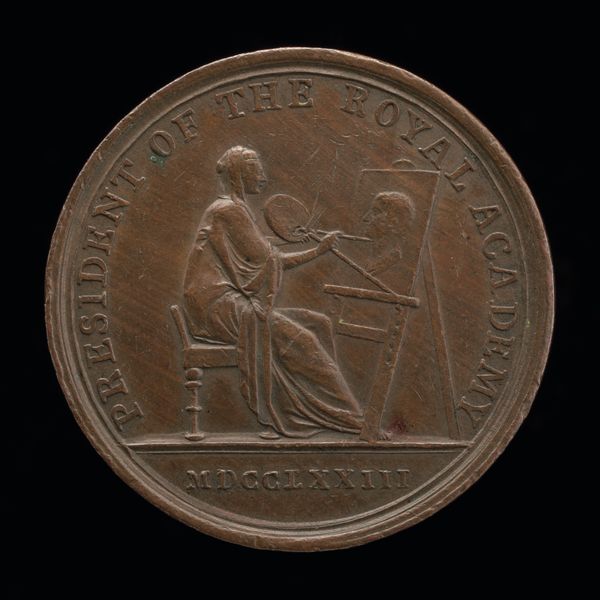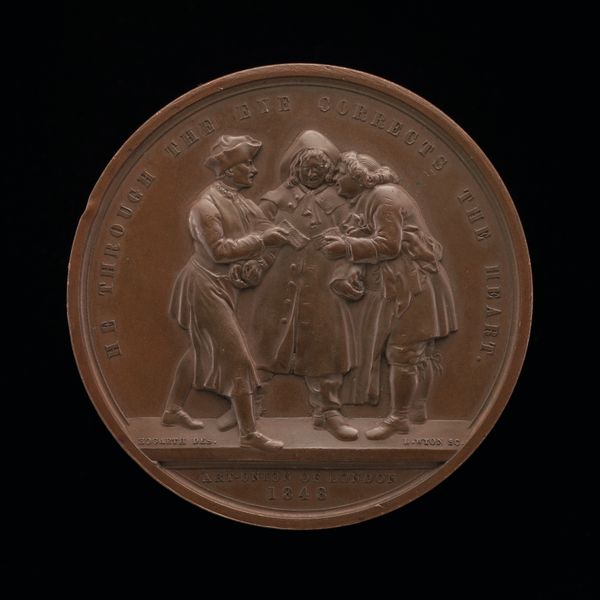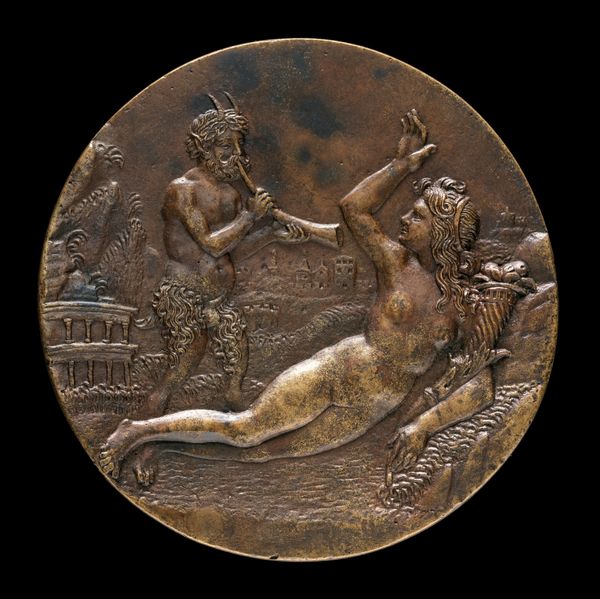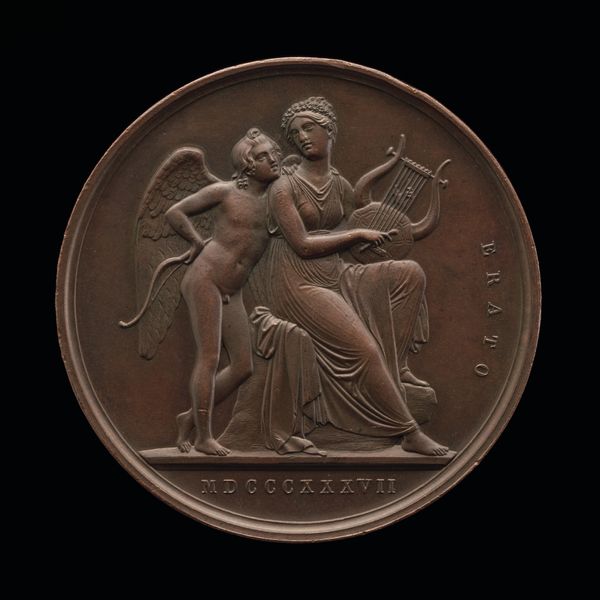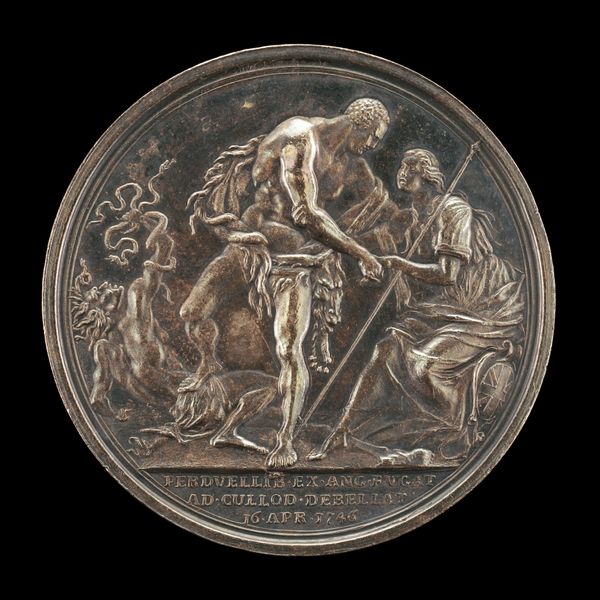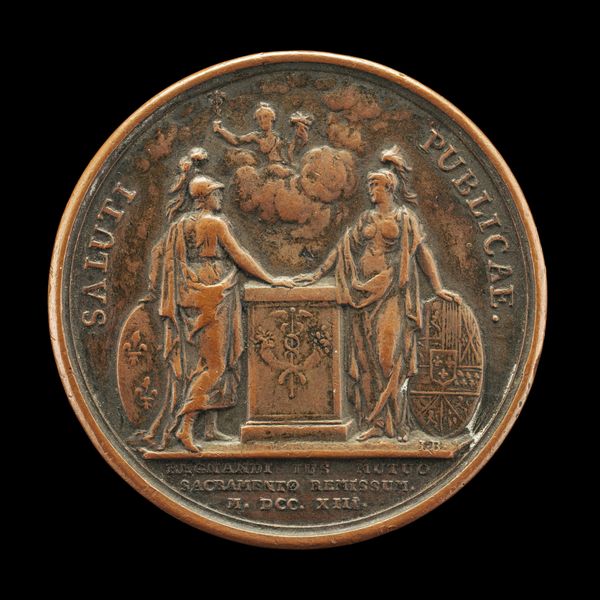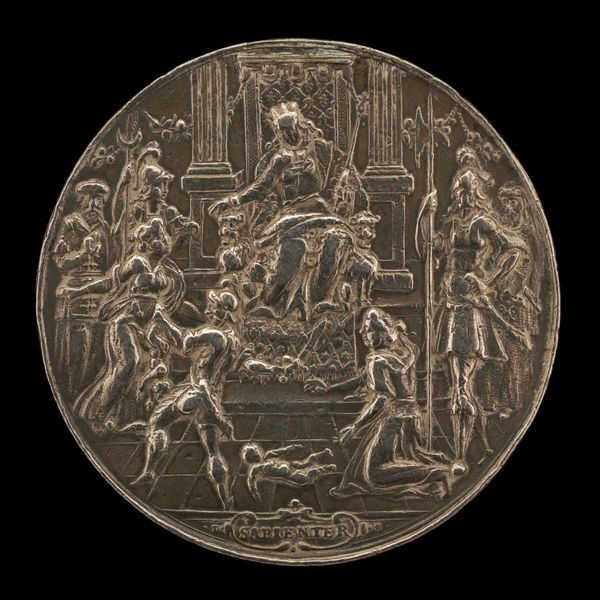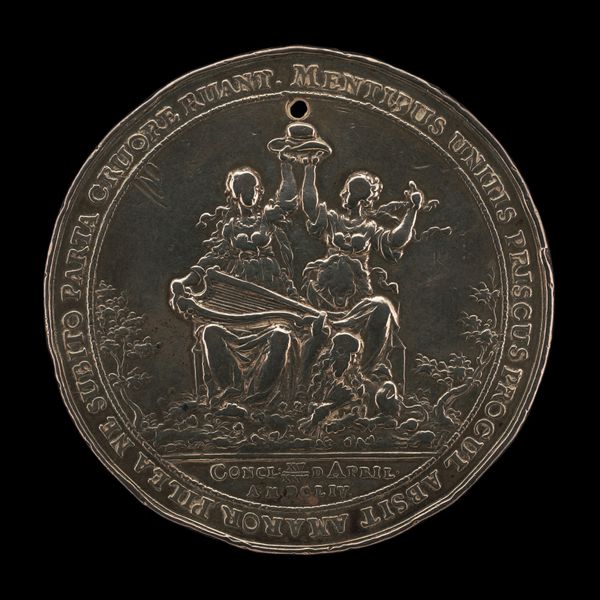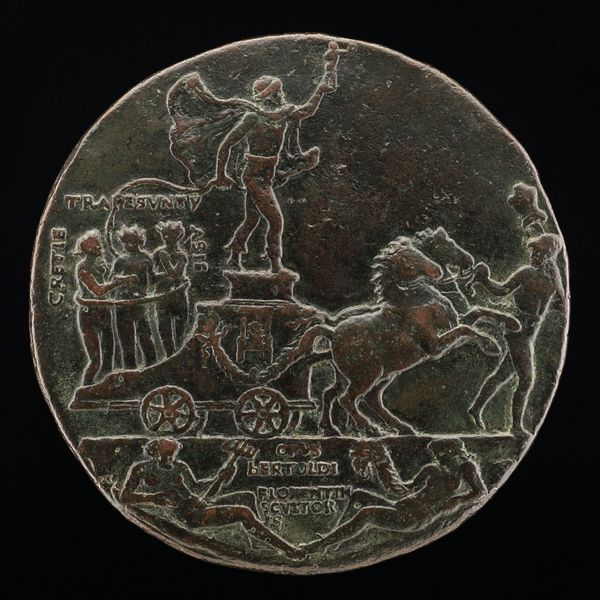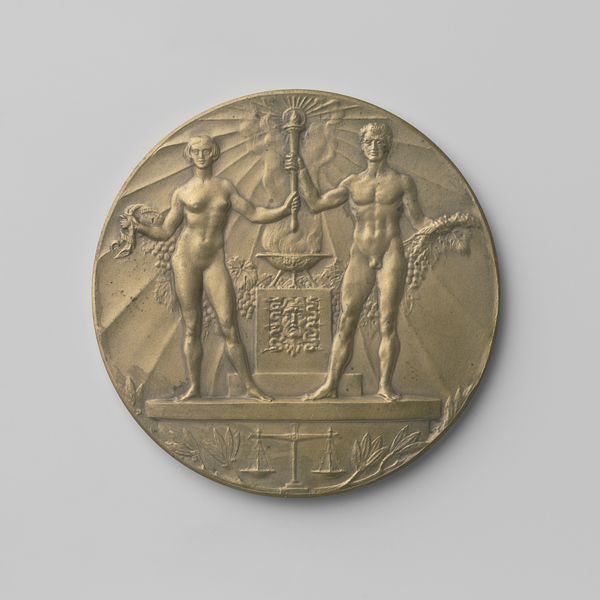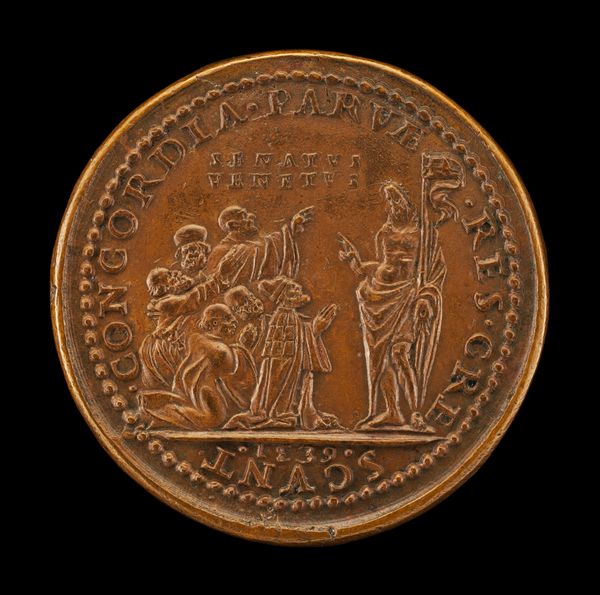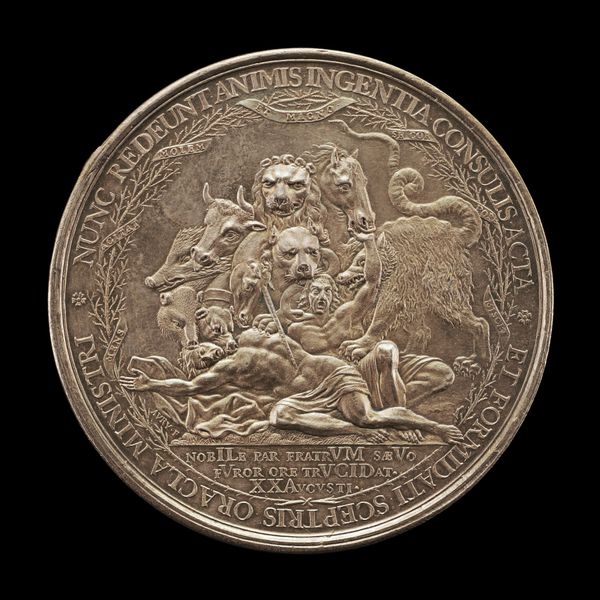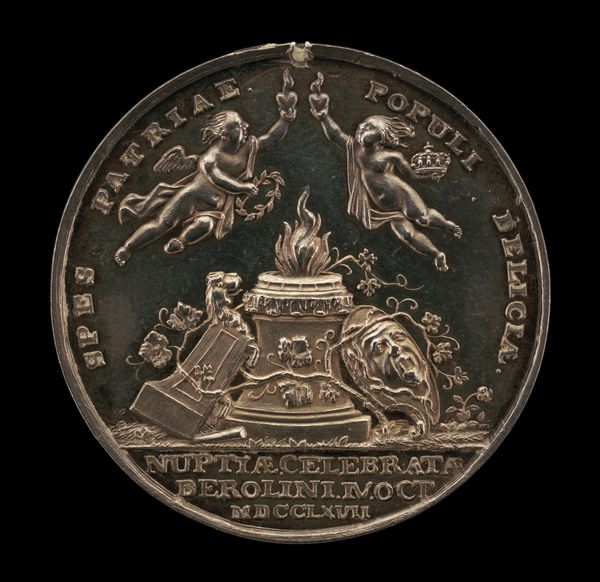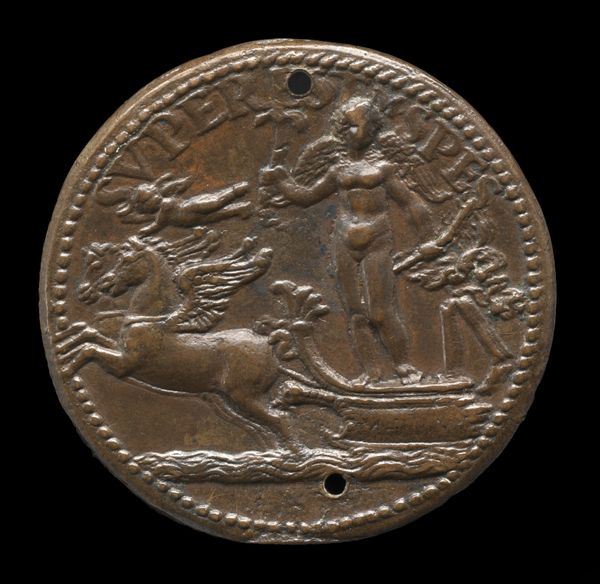![Personifications of Liberty and Justice on a Sarcophagus [reverse] by Jean Dassier](/_next/image?url=https%3A%2F%2Fd2w8kbdekdi1gv.cloudfront.net%2FeyJidWNrZXQiOiAiYXJ0ZXJhLWltYWdlcy1idWNrZXQiLCAia2V5IjogImFydHdvcmtzLzJiZmFiY2ZjLThhZTQtNGNkYy1iY2FhLWEwNTE1NjRhOGU4ZS8yYmZhYmNmYy04YWU0LTRjZGMtYmNhYS1hMDUxNTY0YThlOGVfZnVsbC5qcGciLCAiZWRpdHMiOiB7InJlc2l6ZSI6IHsid2lkdGgiOiAxOTIwLCAiaGVpZ2h0IjogMTkyMCwgImZpdCI6ICJpbnNpZGUifX19&w=3840&q=75)
Personifications of Liberty and Justice on a Sarcophagus [reverse] c. 1733
0:00
0:00
relief, bronze, sculpture
#
medal
#
allegory
#
baroque
#
stone
#
sculpture
#
relief
#
bronze
#
sculptural image
#
geometric
#
sculpture
#
history-painting
#
decorative-art
Dimensions: overall (diameter): 4.24 cm (1 11/16 in.)
Copyright: National Gallery of Art: CC0 1.0
Curator: Jean Dassier's bronze relief, "Personifications of Liberty and Justice on a Sarcophagus [reverse]," created around 1733, presents a compelling study in allegorical form. Editor: My first impression is that there's a very deliberate contrast happening in the textures here, particularly between the smoothness of the figures and the rougher, more granular texture of the background field. It adds a really tactile quality to what could otherwise be a purely symbolic work. Curator: Precisely. The figures of Liberty and Justice are seated atop a sarcophagus, underscoring a meditation on mortality and legacy inherent within the very ideals they represent. It invites questions about what it means for liberty and justice to endure through time, especially when considering societal constructs of power and access. Editor: And speaking of balance—both literally and figuratively—observe how Dassier balances the composition. The figures mirror each other in pose, yet the weight of Justice's scales seems to pull the viewer's eye slightly to the right, creating a subtle tension. Curator: Absolutely. We need to ask, for whom were these scales balanced? Considering the socio-political contexts of the era, such imagery often served those already in positions of privilege. Justice and Liberty are not universally experienced ideals, of course; they’re always mediated by social structures, making this almost a subtle commentary. Editor: The details, especially the cherubic figure below and the instruments alongside the sarcophagus, are all elegantly arranged. I’m intrigued by their meaning here—do they further expand or perhaps even complicate the figures' representation of Liberty and Justice? Curator: The cupid suggests perhaps the legacy for future generations and the objects hinting at war are reminders that justice and liberty are sometimes achieved by non peaceful means, and only serve a group of the population. Dassier's work offers a layered look into this very notion of historical legacy, suggesting these virtues must be vigilantly upheld, lest we betray our stated ideals and create disparities. Editor: A potent work, prompting consideration of both form and deeper contextual narratives. Curator: Indeed, a valuable reminder that these concepts are never neutral, and their meaning is always up for debate and reconstruction.
Comments
No comments
Be the first to comment and join the conversation on the ultimate creative platform.
